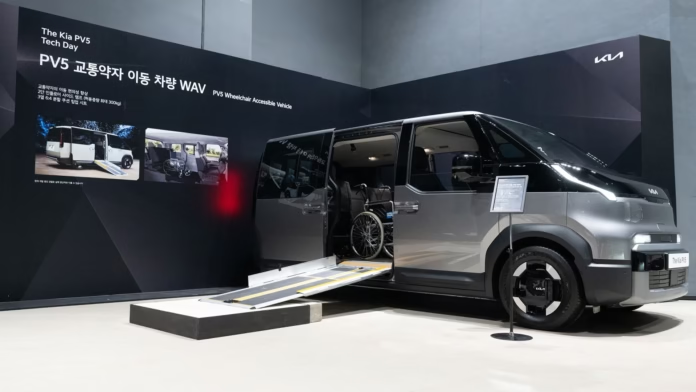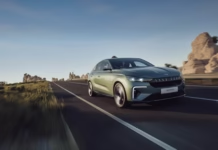The mobility landscape is rapidly transforming, driven by electric vehicle (EV) innovations and a growing demand for adaptable, sustainable transportation. Commercial vehicles, in particular, are shifting toward versatile, purpose-built designs to better serve diverse business needs. Kia’s launch of the PV5, its first dedicated Platform Beyond Vehicle (PBV), exemplifies this evolution. Developed on Hyundai Motor Group’s state-of-the-art Electric-Global Modular Platform for Service (E-GMP.S), the PV5 aims to redefine commercial and passenger mobility. By integrating customer-led design, modular architecture, and electric powertrain efficiencies, Kia is setting new benchmarks for flexible, next-generation EVs in the burgeoning PBV market.
Introducing the Kia PV5: A Revolution in PBV Mobility
Unveiled at the Kia PV5 Tech Day in Gwangmyeong, South Korea, the PV5 represents far more than a vehicle — it is the foundation of a new flexible mobility ecosystem. Built on Hyundai Motor Group’s proprietary E-GMP.S platform, the PV5 emphasizes interior space optimization and occupant safety, critical factors for commercial and passenger applications. Its design focuses on adaptability to real-world business needs, offering versatile configurations from passenger vans to cargo and wheelchair-accessible models. Kia’s approach actively involved global business customers during development, ensuring the vehicle meets practical demands across logistics, mobility, delivery, and utility sectors.
Customer-Driven Design for Maximum Usability and Accessibility
Kia’s commitment to a customer-centric development process is key to the PV5’s versatile functionality. Feedback from over 120 global business clients shaped crucial vehicle features, including cargo space expansion by removing the front passenger seat, stain-resistant materials, and “walk-through” interiors for easier movement between cabin and cargo spaces on high-roof models. Moreover, the PV5 WAV (Wheelchair Accessible Vehicle) variant addresses accessibility by incorporating low-floor designs and gentle-sloped side-entry ramps with universal securing systems, an often-overlooked niche in commercial electric vehicles.
Electric-Global Modular Platform for Service (E-GMP.S): The Technological Backbone
At the core of the PV5 is the E-GMP.S platform, adapted from Hyundai Motor Group’s established E-GMP technology used in passenger EVs. This modular platform standardizes critical components such as the battery pack, motors, suspension, and underbody, enabling rapid development across diverse vehicle formats. Key innovations include the “PE room,” an optimized space allocation for power electronics components, and forward-shifted driver positioning to maximize cargo volume. Safety is paramount, with ultra-high-tensile steel structures and reinforced framing protecting both occupants and essential EV components, including advanced battery safeguards.
Kia’s software ecosystem complements the hardware, offering fleet management systems and an Android Automotive OS-based infotainment platform, which supports real-time monitoring and vehicle updates over-the-air. These technologies reduce total cost of ownership (TCO), making the PV5 economically viable for fleet operators.
Flexible Body System: Modularity Meets Versatility
A standout innovation in the PV5 is Kia’s Flexible Body System, a modular construction approach enabling multiple vehicle configurations from a limited set of components. This system allows quick assembly of up to 16 variants by interchanging rear modules, roof heights, doors, and panels. For example, the cargo long-body version can be effortlessly converted into a passenger vehicle by swapping just the quarter glass and tailgate components, highlighting the platform’s manufacturing efficiency and adaptability.
This modularity extends to maintenance, with composite rear panels designed for easy and cost-effective repair. The vehicle’s exoskeletal frame improves chassis stiffness and noise, vibration, and harshness (NVH) performance, ensuring durability in various commercial applications.
Flexible Space and Applications: Comprehensive Electric Vehicle Solutions
The PV5’s design blends compact footprint with spacious interiors, offering an extensive range of seating and cargo options. Despite its C-segment classification (4,495–4,695mm length), it achieves an impressive 2,995mm wheelbase and low-floor layout to optimize passenger comfort and cargo capacity. Cargo space ranges from 3.6 m³ in passenger models to over 5.1 m³ in high-roof variants, with step heights tailored for accessibility. Dynamic seating layouts (such as 2-3-0, 2-2-3, and 1-2-3) provide multi-use versatility.
The PV5’s electric drivetrain supports three battery options (43.3 kWh LFP, 51.5 kWh NCM, and 71.2 kWh NCM) paired with 120 kW motors delivering 250 Nm torque, delivering zero emissions and competitive ranges up to around 249 miles (WLTP). Advanced features like Vehicle-to-Load (V2L) technology enable the vehicle to power external devices, expanding operational capabilities for business users onboard and in the field.
Conversion-Ready Design and Production Innovation
Anticipating diverse business customization needs, Kia designed the PV5 for seamless conversions via its dedicated PBV Conversion Center. Factory-quality modifications—or “conversions”—are performed to meet specific operational requirements while maintaining safety and durability. Donor models arrive prepped with modularity in mind, facilitating integrations such as additional seating or specialized cargo fittings.
Supporting this, Kia offers a global Conversion Portal System granting technical resources and direct support to conversion partners. This holistic ecosystem promotes broad adoption of tailored PBV solutions suited to various industries, from logistics to mobility services.







